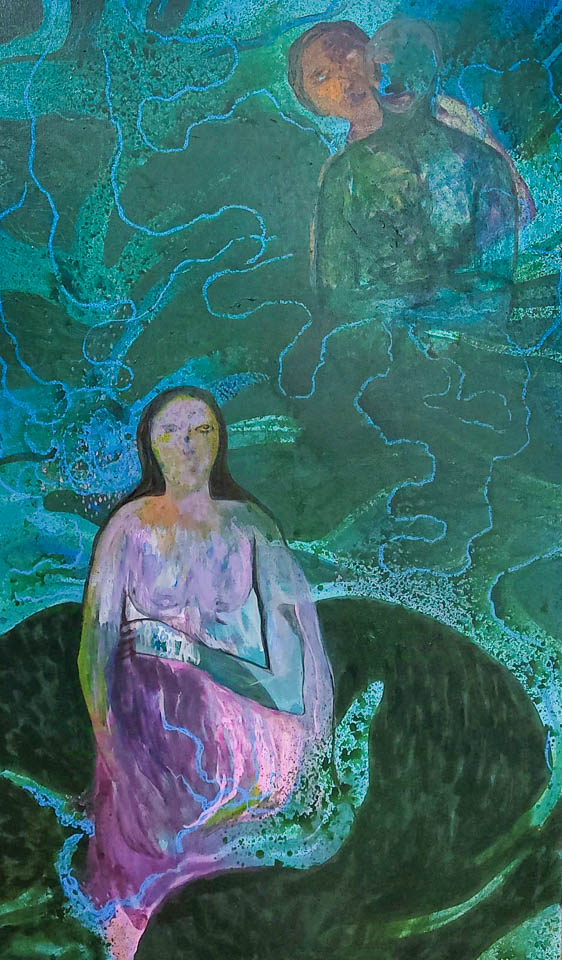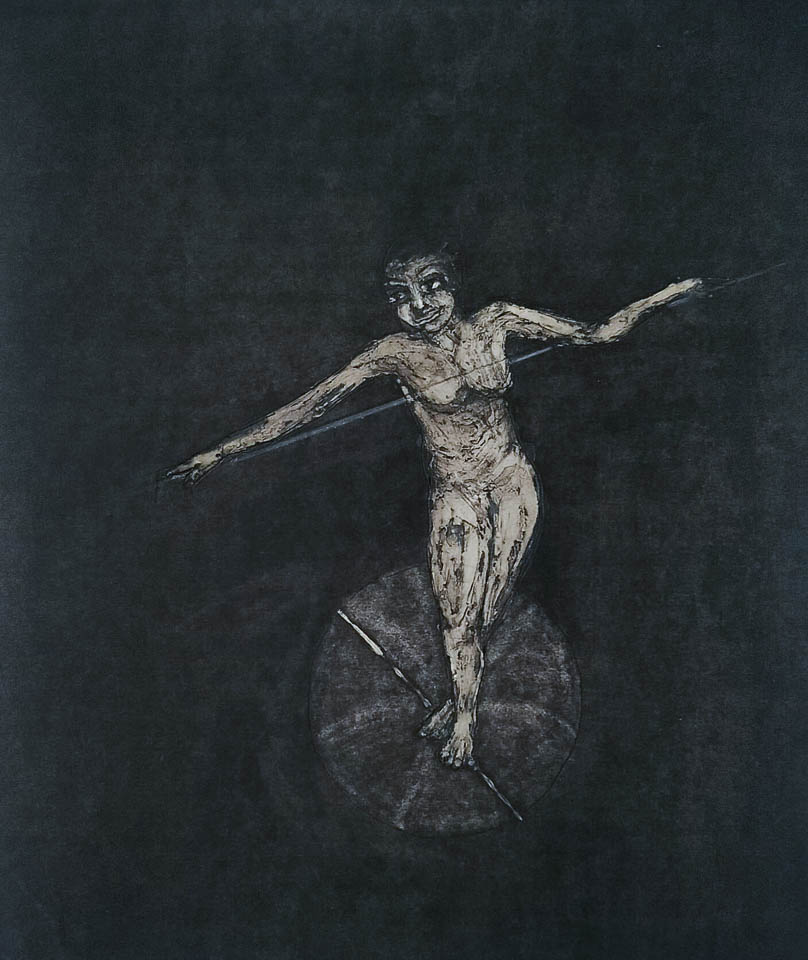Art, in its essence, is an expression of beauty and joy. It is also a mirror reflecting the depth of human experience—both light and dark. While many might seek solace in the uplifting qualities of art, its transformative power lies equally in its ability to capture and convey the so-called “negative” emotions: pain, struggle, sorrow, anger, and fear. These emotions, often stigmatised or suppressed in our daily lives, find validation and voice through the works of artists like Milan Sharma and Suchita Manale, who traverse the intricacies of feminine emotions, struggles, and pain.
In a world where women’s narratives have often been overshadowed or romanticised, their artistic practice demands recognition for its aesthetic value and its profound emotional resonance. For these women artists, focusing on emotional turbulence and hardships is not a glorification of suffering but an act of courage, honesty, and resistance. It brings awareness to the gendered experience, humanising the unseen wounds, frustrations, and trauma that women endure in their societal roles and individual lives.
The Role of “Negative” Emotions in Art
Historically, art has often been viewed as a pursuit of beauty, balance, and harmony. Yet some of the most compelling works are those that embrace discomfort, presenting us with the raw and uncomfortable truth of human existence. Negative emotions are the undercurrents of life—inescapable, often lingering just beneath the surface. Denying them in art would be to deny their validity in life.
From Edvard Munch’s existential dread in The Scream to Frida Kahlo’s portrayal of personal pain and physical suffering, artists have long found that these emotions carry profound universal truths. In the case of women artists, especially, the expression of negative emotions is a means of reclaiming narrative control. These emotions help explore the complexities of gendered oppression, societal expectations, and personal trauma in ways that are deeply visceral and transcendent.
Milan Sharma and Suchita Manale’s works embody this tradition, exploring feminine experiences of vulnerability, fear, anger, and resilience. By focusing on these raw emotions, they challenge the narrative of women as passive, delicate beings. Instead, they highlight women’s capacity for inner strength, and endurance, despite the continuous societal pressures to present as joyful, composed, and nurturing. Their work invites the viewer to witness and empathise with the often-unspoken emotional landscapes of women’s lives.
Milan Sharma: The Subconscious as a Portal to Expression

Milan Sharma’s work is deeply rooted in the exploration of the subconscious and the vivid landscapes of dreams. Her art delves into the intricate diversity of her innermost thoughts, personal struggles, and emotions, particularly within the context of womanhood. Sharma navigates her subconscious with a sensibility that intertwines the deeply personal with the universally resonant, creating semi-figurative forms, abstract aesthetics, and vibrant hues that invite viewers into her emotional and spiritual world.
Her work is a visual representation and a manifestation of complex memories, dreams, and emotions. The semi-figurative forms in her art are deliberate and carry the weight of her subconscious musings, offering viewers an intimate glimpse into the artist’s psyche. Sharma’s art is a reflection of how negative emotions—pain, struggle, and sorrow—can be channelled into profound artistic expression, providing an opportunity for self-exploration, healing, and release.
Sharma’s art also embraces womanhood as a central theme, highlighting the emotional complexities that come with navigating societal expectations. Her work challenges these pressures by focusing on the internal, often hidden, struggles that women face. The deliberate and thoughtful use of colour in her work further amplifies her expression, as it reflects the ebb and flow of her emotional states.
In addition to her paintings, Sharma extends her artistic exploration into printmaking, which serves as a therapeutic method for channelling and reconciling the emotions that inform her work. The tactile process of printmaking allows her to connect with her subconscious in a visceral way, finding a profound sense of release through the act of creation. By sharing her thoughts and emotions with the world, Sharma invites viewers into her sacred space, fostering a sense of shared vulnerability and connection.
Suchita Manale: The Tension Between Vulnerability and Strength
Suchita Manale is an artist whose early works were profoundly influenced by personal experiences of anxiety, isolation, and loss, spurred by the devastating earthquake that struck her hometown in Latur. As she transitioned into printmaking and performance art, she began to delve deeper into the exploration of women’s roles in Indian society. Manale’s art sheds light on the complexities and challenges women face, using her creative expression to provoke thought and inspire societal change.

Her recent works focus on the theme of fear—an emotion that is both deeply personal and broadly societal. In these pieces, Manale reflects on fear’s impact on individuals, particularly women, and on society as a whole. Rather than portraying suffering as noble or inevitable, her art seeks to offer a more honest and human portrayal of womanhood. By presenting pain and struggle, she reclaims the right for women to be seen not only as nurturing figures but as fully realised individuals capable of experiencing complex emotions.
Manale’s work also serves as a call for solidarity among women, inviting them to recognize their own experiences in her art. Through this shared emotional resonance, her art fosters a collective sense of empowerment, making her diverse body of work both personally emotive and socially significant.
The Importance of Expression for Artists
For artists like Sharma and Manale, focusing on these so-called negative emotions is a necessity. Art becomes a conduit for emotional release, self-exploration, and cultural critique. Suppressing or ignoring negative emotions would be an act of self-denial, especially when such emotions form a critical part of the human condition.
For both women, expressing pain is an act of healing. It provides a space to transform emotions into something tangible, allowing them to examine, process, and ultimately transcend their inner struggles. But beyond personal catharsis, their art also serves as a communal offering—a way of fostering connection by giving others permission to acknowledge and express their own difficult emotions.
By choosing to focus on feminine pain and struggle, Sharma and Manale disrupt societal expectations that often seek to sideline such topics. Their work challenges the perception that pain, particularly female pain, is something to be hidden or dismissed. Instead, they affirm that emotional complexity, even when uncomfortable, is something that can and should be embraced, examined, and valued. Their work becomes an essential form of resistance against the idealised depictions of women and femininity that dominate mainstream culture, making space for authenticity and vulnerability.
